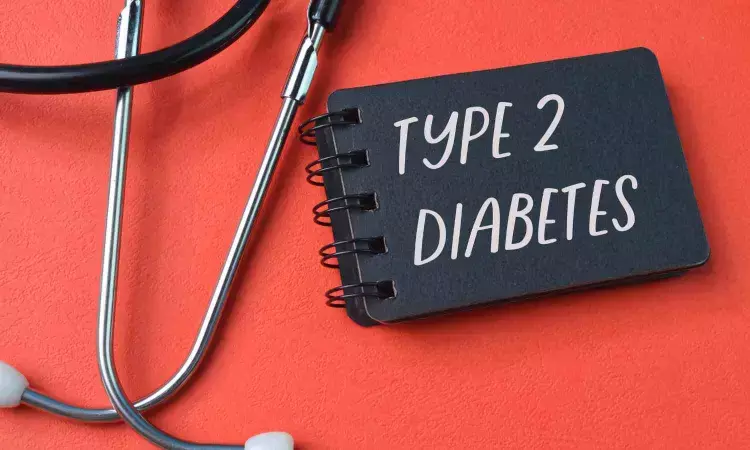- Home
- Medical news & Guidelines
- Anesthesiology
- Cardiology and CTVS
- Critical Care
- Dentistry
- Dermatology
- Diabetes and Endocrinology
- ENT
- Gastroenterology
- Medicine
- Nephrology
- Neurology
- Obstretics-Gynaecology
- Oncology
- Ophthalmology
- Orthopaedics
- Pediatrics-Neonatology
- Psychiatry
- Pulmonology
- Radiology
- Surgery
- Urology
- Laboratory Medicine
- Diet
- Nursing
- Paramedical
- Physiotherapy
- Health news
- Fact Check
- Bone Health Fact Check
- Brain Health Fact Check
- Cancer Related Fact Check
- Child Care Fact Check
- Dental and oral health fact check
- Diabetes and metabolic health fact check
- Diet and Nutrition Fact Check
- Eye and ENT Care Fact Check
- Fitness fact check
- Gut health fact check
- Heart health fact check
- Kidney health fact check
- Medical education fact check
- Men's health fact check
- Respiratory fact check
- Skin and hair care fact check
- Vaccine and Immunization fact check
- Women's health fact check
- AYUSH
- State News
- Andaman and Nicobar Islands
- Andhra Pradesh
- Arunachal Pradesh
- Assam
- Bihar
- Chandigarh
- Chattisgarh
- Dadra and Nagar Haveli
- Daman and Diu
- Delhi
- Goa
- Gujarat
- Haryana
- Himachal Pradesh
- Jammu & Kashmir
- Jharkhand
- Karnataka
- Kerala
- Ladakh
- Lakshadweep
- Madhya Pradesh
- Maharashtra
- Manipur
- Meghalaya
- Mizoram
- Nagaland
- Odisha
- Puducherry
- Punjab
- Rajasthan
- Sikkim
- Tamil Nadu
- Telangana
- Tripura
- Uttar Pradesh
- Uttrakhand
- West Bengal
- Medical Education
- Industry
Brighter Night Light Exposure Linked to Higher Risk of Type 2 Diabetes: Lancet

Researchers have found in a new study that exposure to brighter light at night significantly increases the risk of developing type 2 diabetes. This conclusion, based on a large prospective cohort study involving UK Biobank participants, emphasizes the importance of maintaining dark environments during nighttime to mitigate diabetes risk. The study was published in The Lancet by Daniel P. and colleagues.
Light exposure at night disrupts circadian rhythms, a known risk factor for type 2 diabetes. While previous research has established this link, this study is the first to demonstrate how personal light exposure patterns predict diabetes risk in a large-scale cohort. The study involved 84,790 participants, aged 62.3 ± 7.9 years, with 58% being female, who wore light sensors for one week to record their day and night light exposure.
The participants' circadian amplitude and phase were modeled from the weekly light data. The study excluded individuals with diabetes prior to light tracking and followed up for 7.9 ± 1.2 years, during which 1,997 incident type 2 diabetes cases were recorded. The analysis adjusted for variables including age, sex, ethnicity, socioeconomic status, lifestyle factors, and polygenic risk.
The study findings were as follows:
Compared to participants with dark nights (0–50th percentiles), those exposed to brighter night light had incrementally higher diabetes risk.
The hazard ratios (HR) were:
50–70th percentiles: HR = 1.29 [1.14–1.46]
70–90th percentiles: HR = 1.39 [1.24–1.57]
90–100th percentiles: HR = 1.53 [1.32–1.77]
Lower modeled circadian amplitude was associated with higher diabetes risk (aHR = 1.07 [1.03–1.10] per standard deviation).
Early or late circadian phases also increased diabetes risk (aHR range: 1.06–1.26).
Both night light exposure and polygenic risk independently predicted higher diabetes risk.
The increased risk from bright night exposure was similar to the risk difference between low and moderate genetic predisposition.
The findings suggest that brighter night light disrupts circadian rhythms, leading to higher diabetes risk. This disruption occurs regardless of genetic predisposition, indicating that environmental factors play a crucial role. The similarity in risk levels between those with bright night light exposure and moderate genetic risk highlights the potential of light management in diabetes prevention.
Avoiding light at night emerges as a simple, cost-effective strategy to reduce diabetes risk. This recommendation holds particular significance for individuals with high genetic risk, who may benefit greatly from minimizing night light exposure. The study concludes that brighter night light exposure and disrupted circadian rhythms significantly increase the risk of type 2 diabetes.
Reference:
Windred, D. P., Burns, A. C., Rutter, M. K., Ching Yeung, C. H., Lane, J. M., Xiao, Q., Saxena, R., Cain, S. W., & Phillips, A. J. K. (2024). Personal light exposure patterns and incidence of type 2 diabetes: analysis of 13 million hours of light sensor data and 670,000 person-years of prospective observation. The Lancet Regional Health. Europe, 100943, 100943. https://doi.org/10.1016/j.lanepe.2024.100943
Dr Riya Dave has completed dentistry from Gujarat University in 2022. She is a dentist and accomplished medical and scientific writer known for her commitment to bridging the gap between clinical expertise and accessible healthcare information. She has been actively involved in writing blogs related to health and wellness.
Dr Kamal Kant Kohli-MBBS, DTCD- a chest specialist with more than 30 years of practice and a flair for writing clinical articles, Dr Kamal Kant Kohli joined Medical Dialogues as a Chief Editor of Medical News. Besides writing articles, as an editor, he proofreads and verifies all the medical content published on Medical Dialogues including those coming from journals, studies,medical conferences,guidelines etc. Email: drkohli@medicaldialogues.in. Contact no. 011-43720751


